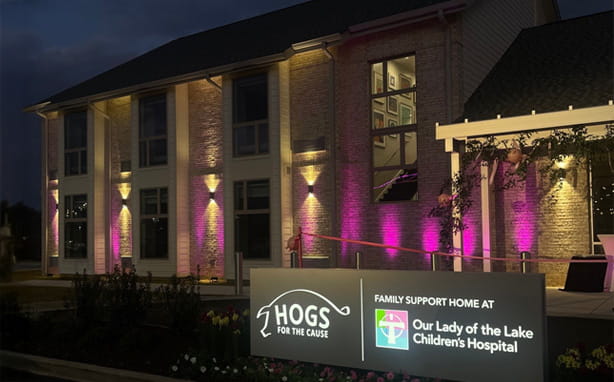Primary Children’s Hospital in Salt Lake City was experiencing rising and unsustainable rates of emergency department visits due to mental health crises. After launching a three-pronged crisis response program, ED visits decreased and outcomes improved.
Challenge
In 2018, the hospital projected the number of ED visits that would require crisis intervention over the next five years. When they saw the data, they realized they needed to act. “It was unsustainable volumes,” says Heather Shotwell, director of Community, Access, And Crisis. “We were worried about how we would manage these increasing patients showing up in the emergency department.”
They also wanted to ensure patients experiencing a mental health crisis had support beyond the ED through increased access, capacity and resources. “We were hopeful to create this richer, more responsive behavioral continuum that supports our families when they want it and where they want it,” Shotwell says.
Solution
In partnership with the Utah Department of Health and Human Services, the hospital implemented a stabilization and mobile response program consisting of three pillars of services:
- Phone and triage. Triage services via a hotline available to any family facing a behavioral health challenge.
- Mobile response. In-home response services by master’s and bachelor’s level clinicians referred to families through triage.
- Stabilization. Six to eight weeks of intensive services for families transferred from either triage or mobile response.
The program was created in partnership with the state of Utah using evidence-based care models from UCLA. Response teams are available seven days a week until 11 p.m. and will meet families in the community where they feel safe, whether it’s a home, library or school. Within one to 72 hours after a phone triage, two clinicians go out together to de-escalate, assess the crisis and discuss a safety plan. The risk assessment is the same a patient would receive in the emergency department. If stabilization is required, a plan is created based on the individual’s needs, with the clinician team meeting with them in their home between two and five times a week for six to eight weeks.
“We have a lot of confidence in the quality of therapeutic interventions we're providing,” says Reece Pickering, MHA, manager of the program. “We’re seeing this not only in quantitative measures but also in patient feedback.”
Primary Children’s Hospital provides these services to 9 of 29 counties in Utah, reaching 31% of the state. Additional partners in the state of Utah provide this service for other counties. As a result, the service is available in 22 of the 29 counties. For patients who reside in a rural area, the hospital either provides a virtual visit or partners with a community provider who can offer additional support.
After a two-year pilot of the program funded by the hospital’s foundation, funding now comes from the state, with the possibility of reimbursement from Medicaid (under the Medicaid 1115 waiver), and commercial insurance.
Results
By all measures, the program has been successful. Not only are ED visits down but care coordination and access have also improved. Since the program’s inception in 2019, Shotwell says response teams have completed 1,064 mobile responses, all of which could have resulted in a visit to the ED. “Although that isn’t super large volume, this is how we start to change the culture. This is how we start to move the needle,” she says.
Along with clinical interventions, patients have received assistance with housing, transportation and food, which in turn improves clinical outcomes. “Social determinants of health often prevent families from being receptive and able to make incremental gains in treatment,” Shotwell says. “The fact that this team can address those needs means the family is more prepared for treatment.”
Patients are being met early in their crisis, with an 86% mobile response rate within one hour of a crisis call.
Additionally, the program:
- Collectively saved families $2.4 million by avoiding ED visits.
- Saw clinical gains for 88% of the families involved in stabilization services.
- Reduced staff-reported safety events when providing care in the home. The ED reported 40 events while the mobile response team reported five over the same time period.
Although the program has resulted in tangible benefits for both the hospital and its patients, Shotwell says one of the best benefits can’t be quantified. “Our families daily tell us how supported they feel. ‘Primary Children's showed up for us. Primary Children's came to our house, and they were able to get my kid to go to school this morning,’” she says. “Our community feels really seen and really heard by us. We’ve helped to instill some hope in them.”
One family member’s comment, provided in an anonymous post care survey, sums up the community’s response: "This service is a dream. I'm so grateful I have someone I could call when I don't know what else to do for my depressed teen. It feels like there is nothing you can do unless your child is actively suicidal. This is a great middle space that saved us an ER visit and gave me support and expert advice! Thank you for developing the desperately needed program!! Please keep it going!”
Shotwell and Pickering’s presentation, “In-Home Services: Is It Worth It?,” was an educational session at Children's Hospital Association’s 2023 Annual Leadership Conference. Experience transformative sessions like this at CHA’s 2024 Transforming Quality Conference, where children’s hospitals will learn to improve children’s health through advancements in data analytics, evolving care systems, creative partnerships and practice improvement efforts.






